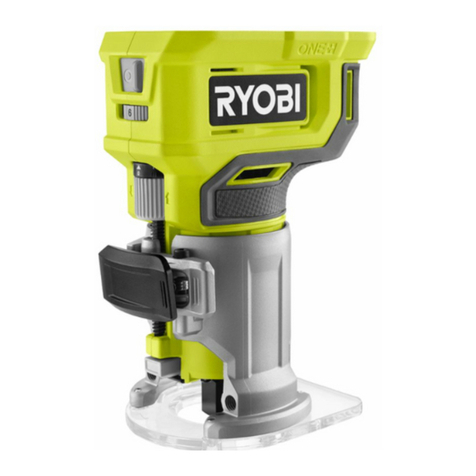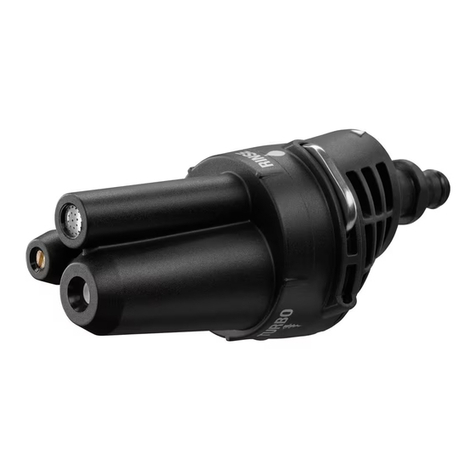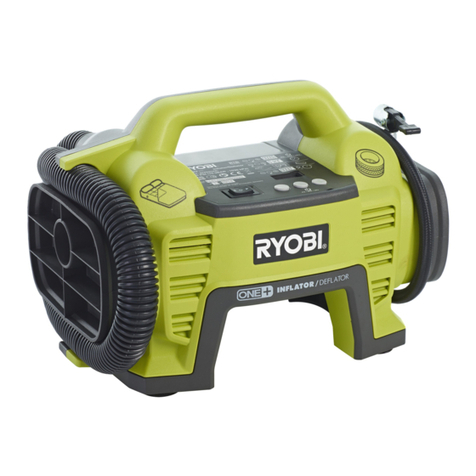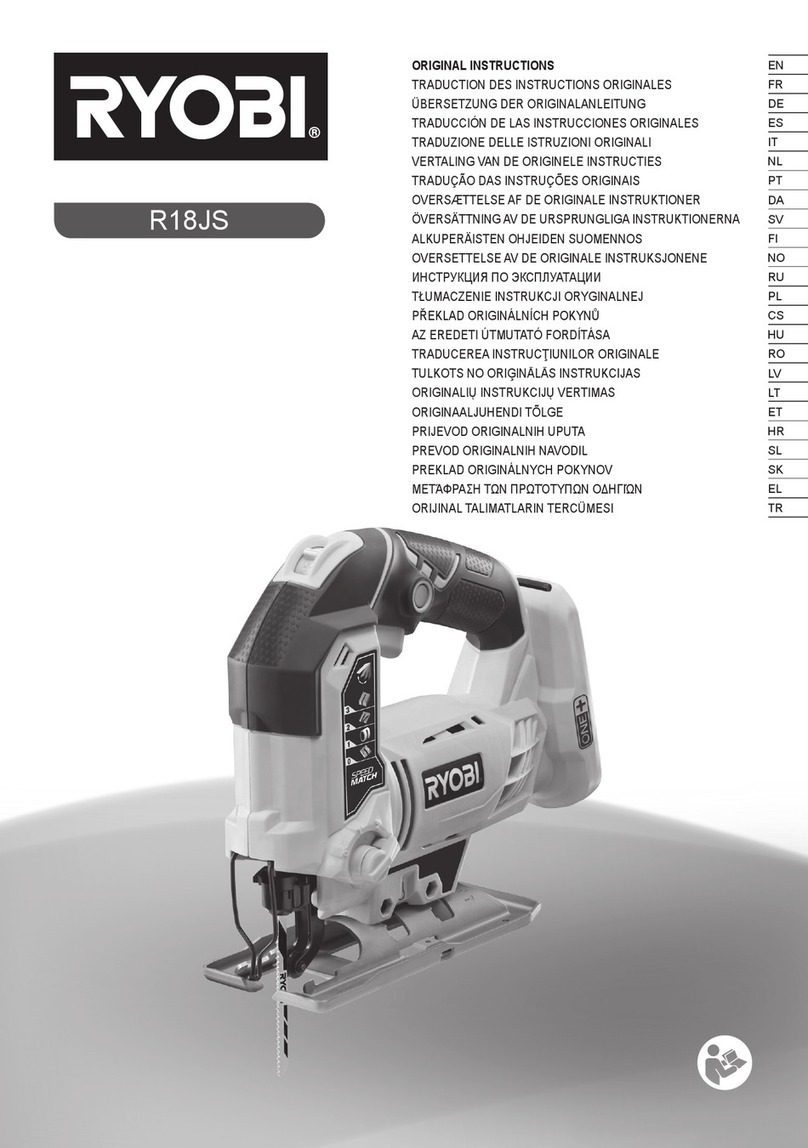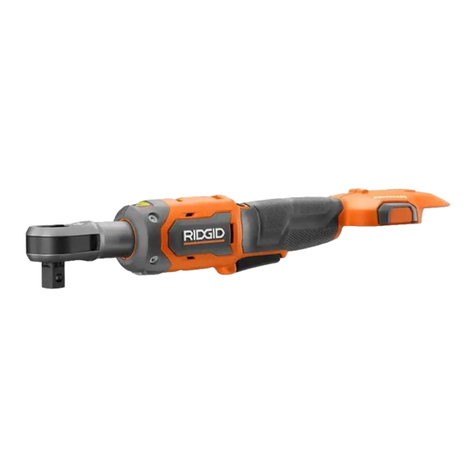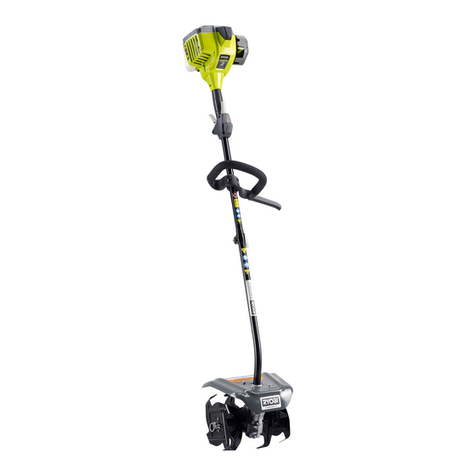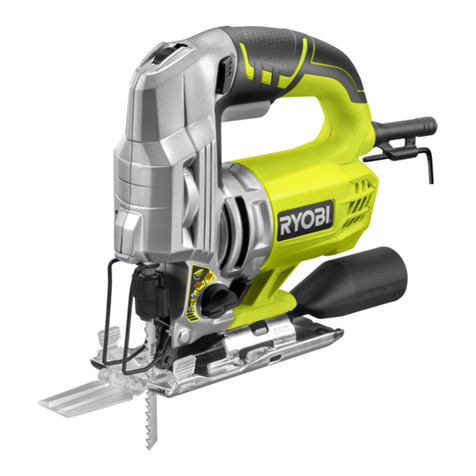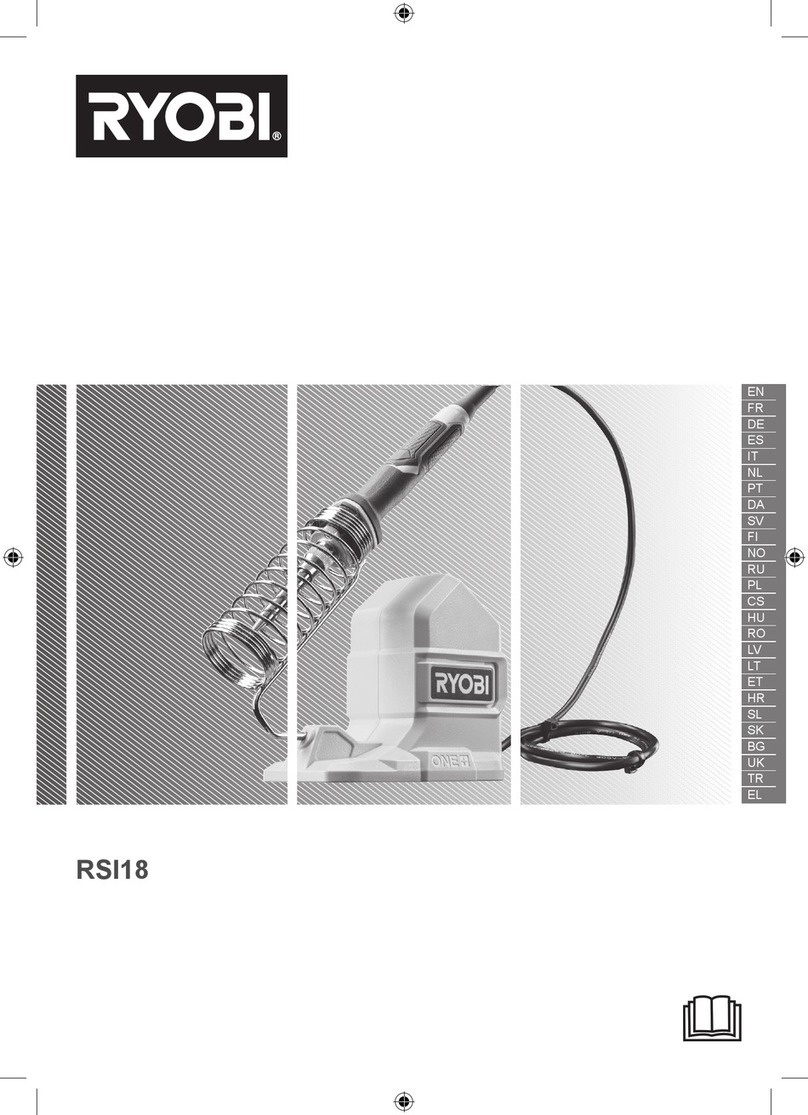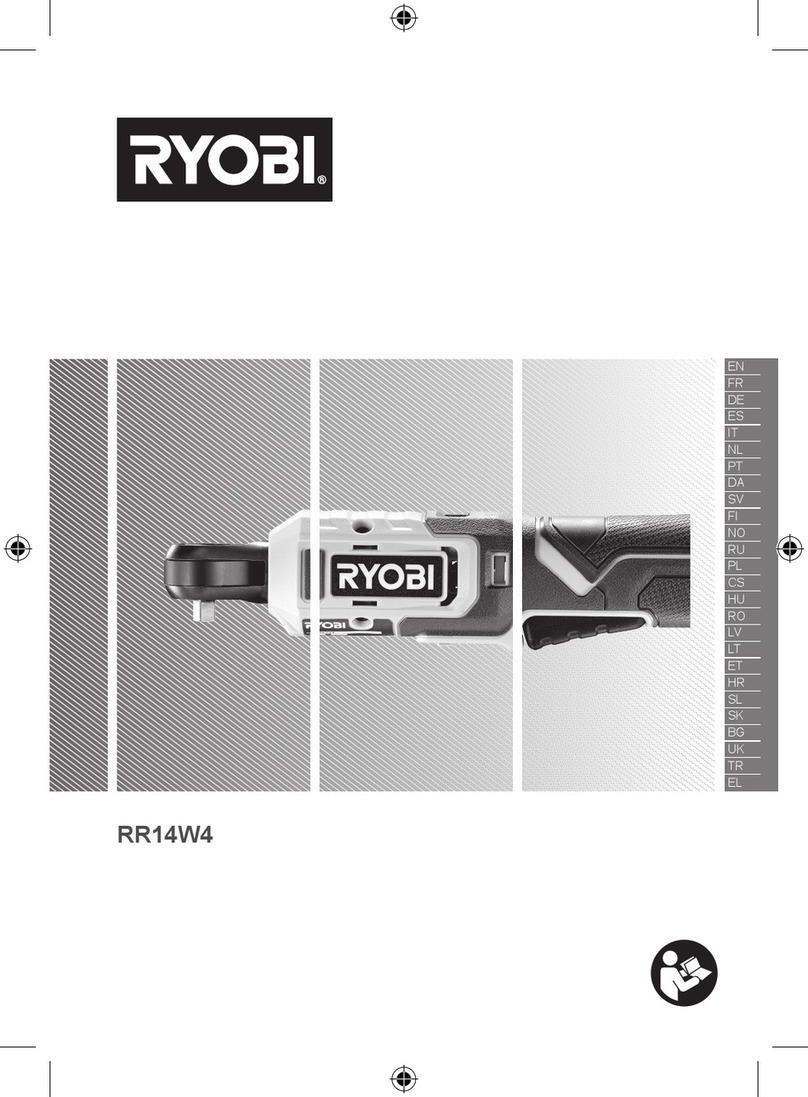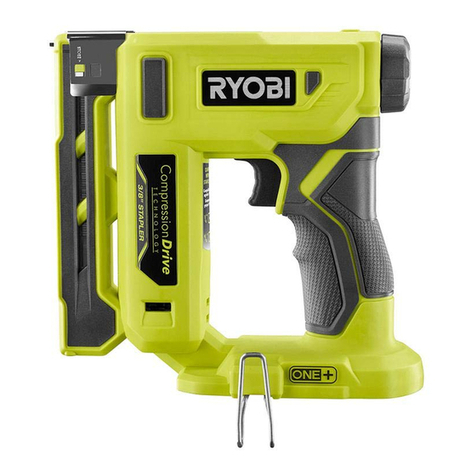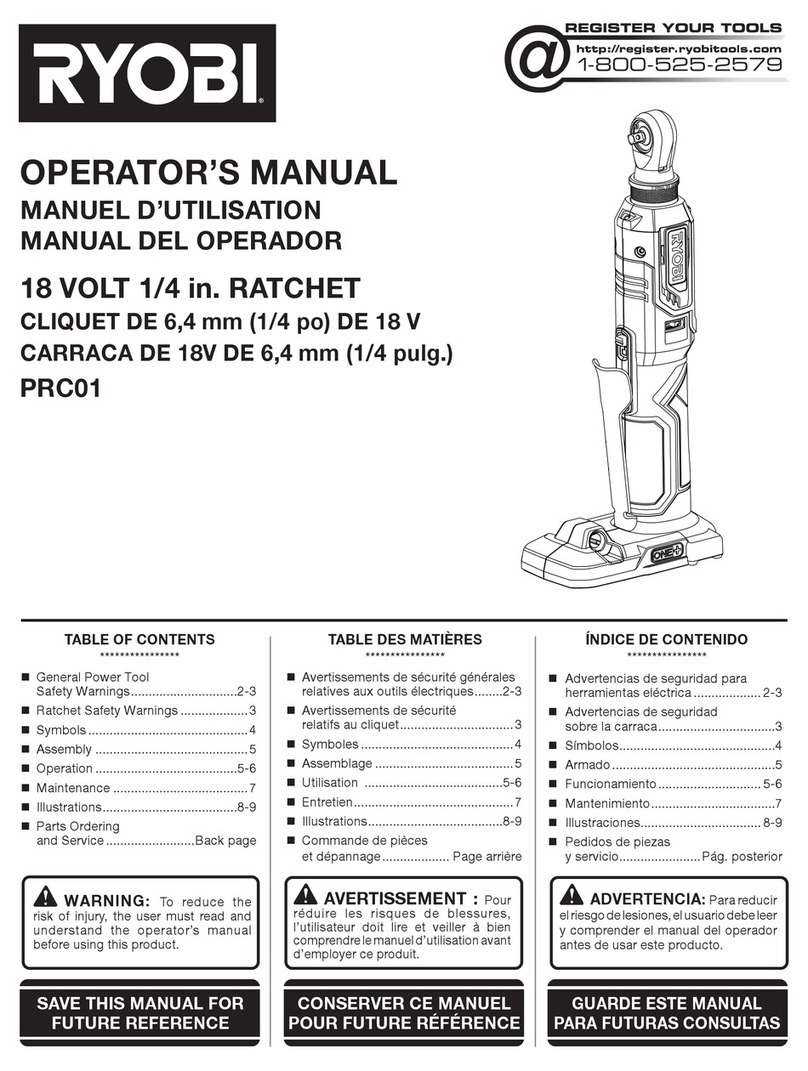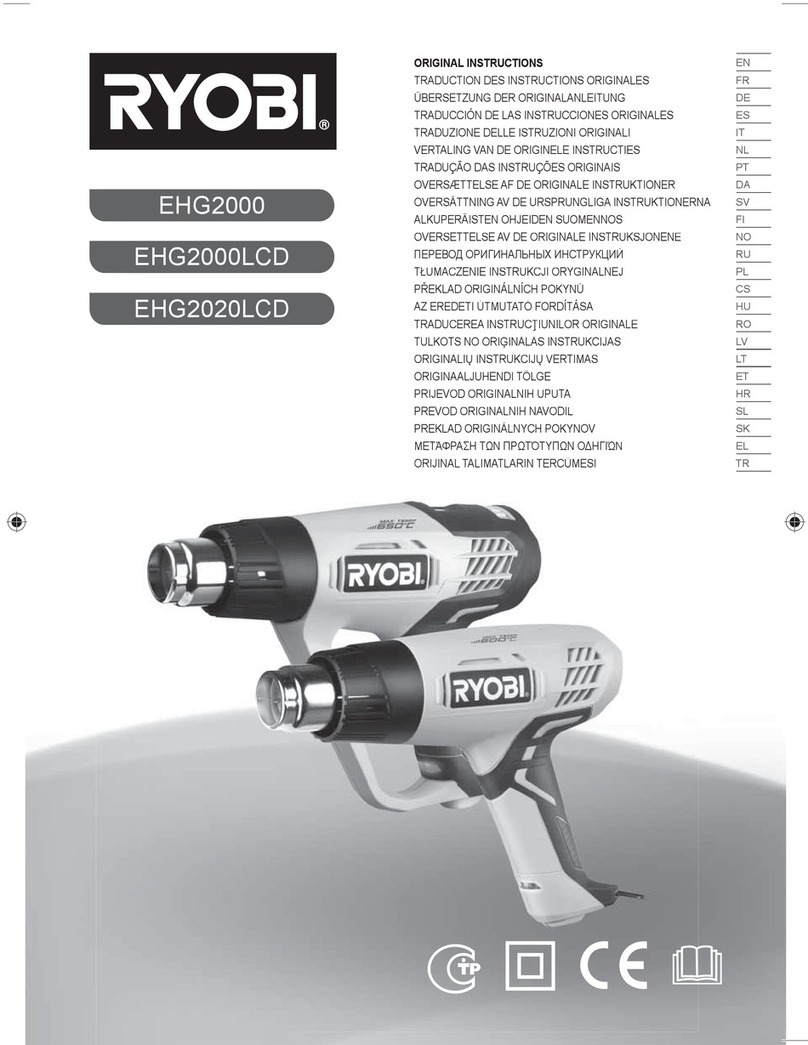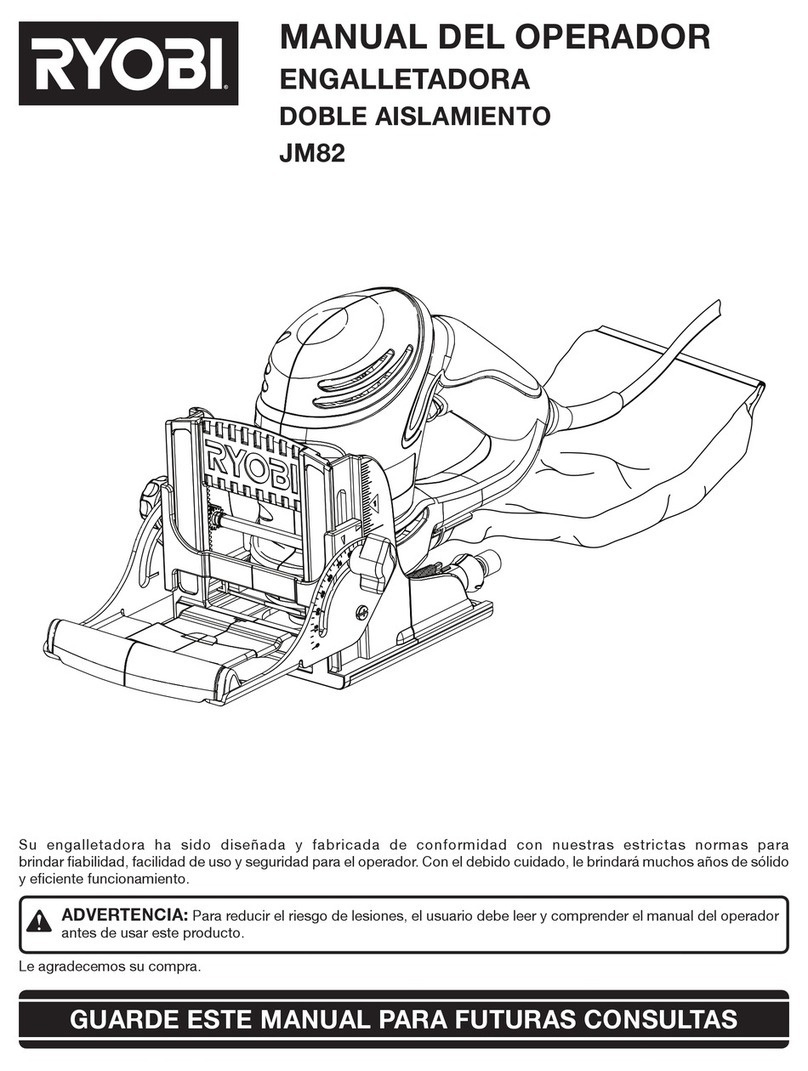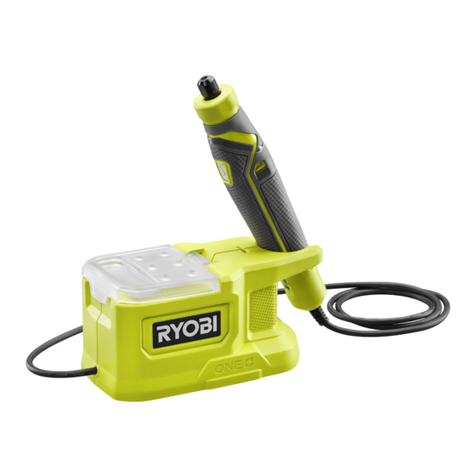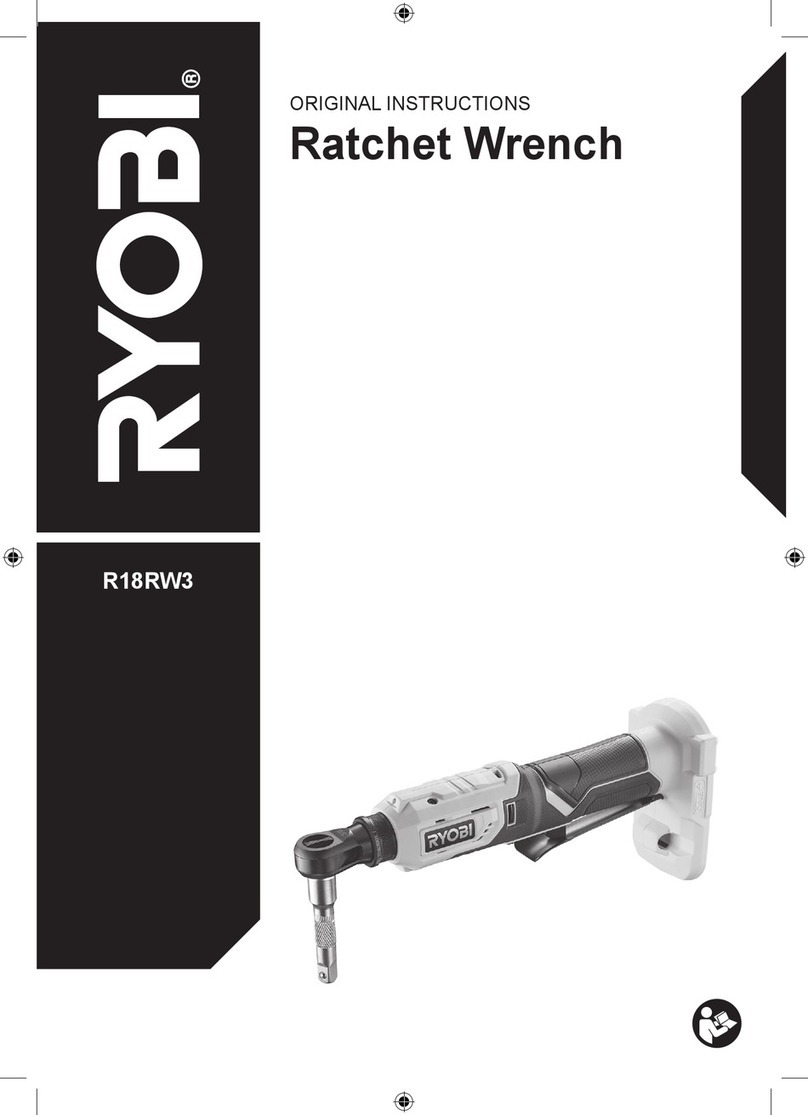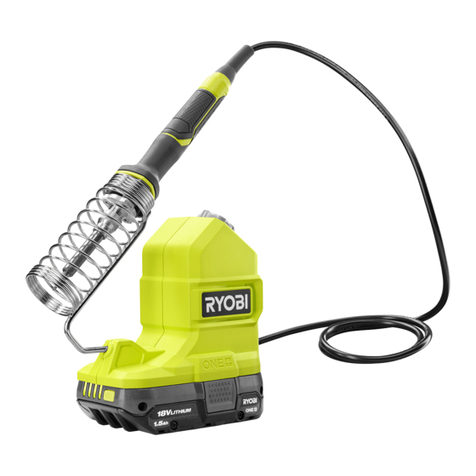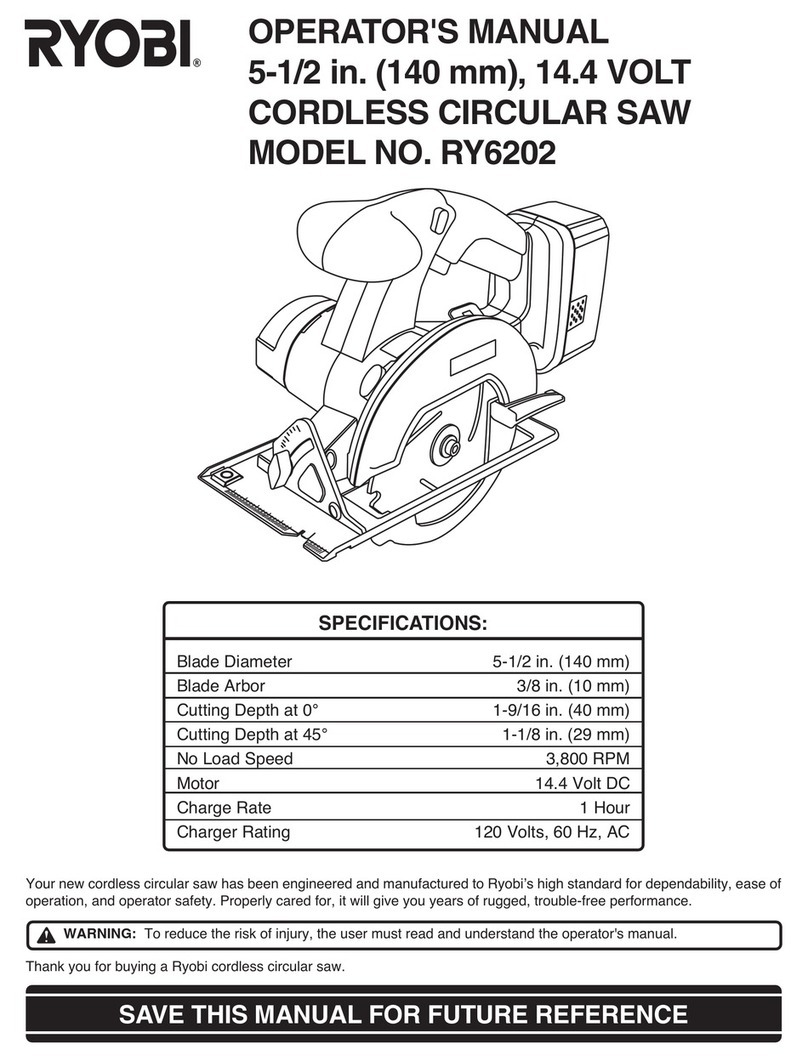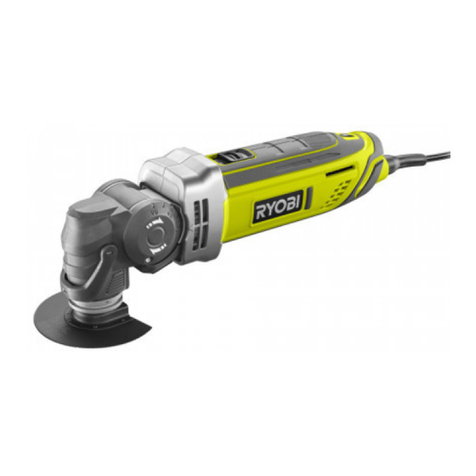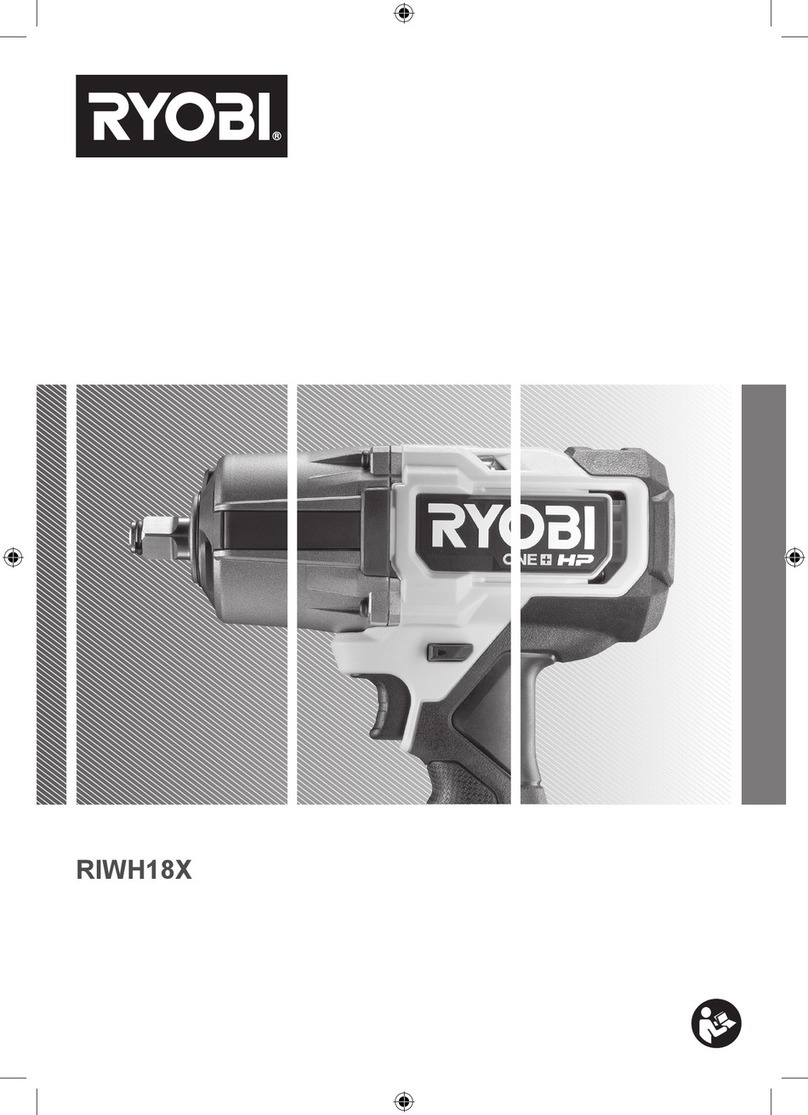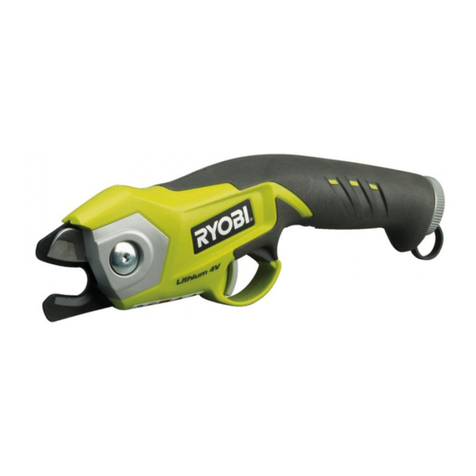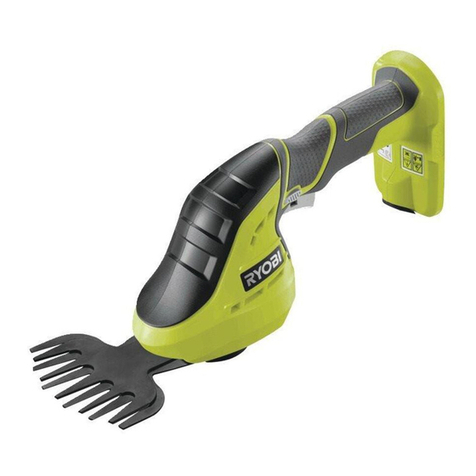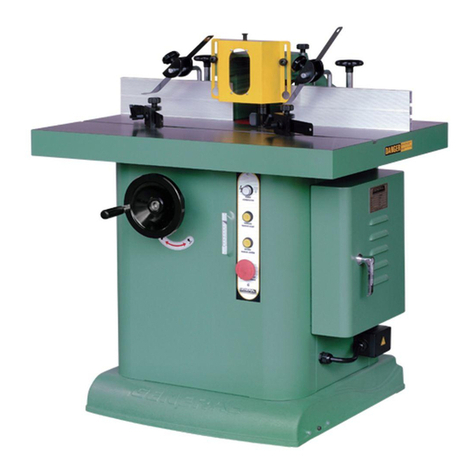
2
English
GB
FR DE ES IT NL PT DK SE FI NO RU PL CZ HU RO LV LT EE HR SI SK GR TR
WARNING
Before connecting your saw to power supply source,
always check to be sure it is not in lock-on position
(depress and release switch trigger). Failure to do so
could result in accidental starting of your saw resulting
in possible serious injury. Do not lock the trigger on jobs
where your saw may need to be stopped suddenly.
TRANSPARENT GUARD
See Figure 3.
For your protection, a transparent guard has been included
with the saw. It is used to shield wood particles from the
eyes. The transparent guard is attached by placing it in
front of the blade area of the base and snapping it into the
tabs on the sides of the saw base. For removal, simply
pull the tap of the transparent guard. Make sure the saw is
unplugged before installation and removal.
NOTE: The transparent guard can only be used for
straight cutting.
TO INSTALL BLADES
See Figure 3 - 4.
Unplug the tool.
WARNING
Failure to unplug your saw could result in accidental
starting causing possible serious injury.
Turn the tool upside down.
Pull the tap of the transparent guard.
Rotate the quick release lever counter-clockwise and
hold in position.
Insert the saw blade into the groove in the roller guide,
making sure the back of the saw blade is properly
positioned in the groove.
NOTE: Only T-shank saw blades can be used.
Push the saw blade into the blade clamp as far as it
will go.
Release the quick release lever.
Install the transparent guard.
WARNING
To avoid possible serious injury, always wear safety
goggles or safety glasses with side shields. Keep hands
and ngers away, from the motor housing and blade
clamp and do not reach underneath work while blade
is cutting.
WARNING
To avoid serious personal injury, do not use saw without
safety guard properly in place.
VARIABLE SPEED
See Figure 9.
Your saw has a variable speed control selector designed
to allow operator control and adjustment of speed and
power limits. The speed and power of your saw can be
increased or decreased by rotating the variable speed
control selector in the direction of the arrows.
NOTE: Hold your saw in normal operating position and
turn the variable speed control selector counterclockwise
to increase speed and power. Turn clockwise to decrease
speed and power.
If you wish to lock the switch on at a given speed, depress
the switch trigger, push in and hold the lock-on button, and
release the switch trigger. Next, adjust the variable speed
control selector until the desired speed is reached.
Avoid running your saw at low speeds for extended
periods of time. Running at low speeds under constant
usage may cause your saw to become overheated.
If this occurs, cool your saw by running it without a load
and at full speed.
The following guidelines may be used in determining
correct speed for various applications:
LOW speed is ideal when minimum speed and power
is required, for example starting cuts.
MEDIUM speed is suitable for cutting hard metals,
plastics and laminates.
HIGH speed produces best results when maximum
power is required, for example cutting wood.
Soft metals such as aluminum, brass and copper also
require high speeds.
BLADE STORAGE
See Figure 2.
A convenient feature of your saw is the blade storage. The
blade storage area is located on the back of dust port. It is
convenient for storing extra blades when not in use.
To open: Pull the door down with your thumb or finger.
Place blades in blade storage area.
To close: Push the door up with your thumb or finger.
